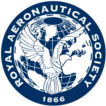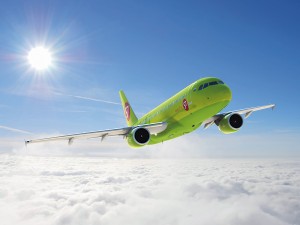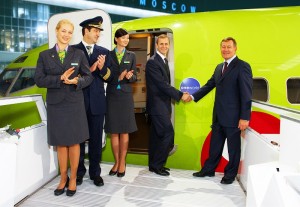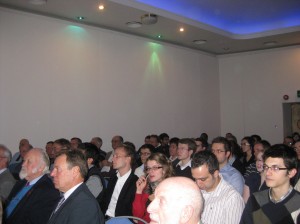Are global airline alliances good or bad for the consumer? A recent debate at the Royal Aeronautical Society highlighted the pros and cons of these transnational giants.
On Monday, 15 November, Russia’s Siberia Airlines, S7 was admitted to the ranks of the oneworld alliance, becoming the 12th member of this alliance. Meanwhile, on the 16 November a joint report into ‘Transatlantic airline alliances: Competitive issues and regulatory approaches’ was published by the European Commission and US Department of Transport. Thus, this week’s Royal Aeronautical Society debate on ‘Airline Alliances, Beneficial or Detrimental for Air Travellers?’ held at the RAeS HQ in London on 16 November, could not have been more timely.
The event, organised by the RAeS’s Air Transport Group was held in the memory of Tony Lucking, an active member of the group and featured a reception afterwards sponsored by Boeing. Chaired by Dame Deirdre Hutton, Chair, UK Civil Aviation Authority, the free-to-attend debate featured two speakers. Speaking in favour of airline alliances was Peter Glade, Director Sales, Star Alliance Services. Opposing him was Captain Edward Davidson, FRAeS, a former Emirates pilot and now aviation consultant.
So what are the issues here? To set the scene, the global air transport world is currently dominated by the big three alliances, Star Alliance, oneworld and SkyTeam, which have some 50 of the world’s most largest and most powerful airlines. Proponents argue that limited co-operation in these alliances gives choice, raises standards and lowers fares for passengers. Opponents argue that these alliances are bullying monopolistic cartels and are reducing competition.
Alliances themselves have grown up because of the restrictive ownership regulations of airlines and because of the economies of scale in joining a larger group. Benefits inside an alliance can include sharing frequent flier programmes, airport lounge access, code sharing, right up to a joint venture which needs antitrust immunity.
So what does this mean for the passenger?
Speaking up for airline alliances, Star’s Peter Glade noted that passengers are concerned about three things – safety, price and product. He argued that while safety should be left out of the comparison between alliance and non-aligned airlines, the economies of scale of being in an alliance, allows airlines to lower their cost base and pass on these savings to passengers.
Alliances, too, allow airlines to share risks of innovation, such as new IT systems, or advanced biofuels. He also argued that alliances give airlines and passengers more global reach, options and frequency – allowing customers the choice of picking the schedule that best suits them, rather than a single airline.
Consultant Ed Davidson took up the opposing view. He argued that alliances have undue influence over airports and in particular the allocation of valuable slots. This, he noted, means that the barriers to new entrants in the airline market (already quite formidable), are raised even higher. He contended that alliances exert a monopolistic control, with eight out of the top 13 airports in the world having more than a 50% share by alliance carriers. Significantly the only airport where this is reversed is at Dubai where non-aligned Emirates dominates. Alliances, he said, have 81% of the traffic in the world’s top ten markets. Among the risks of alliances he identified were potential collusion on pricing, a lack of choice, control over slots, undue influence over major airport infrastructure projects, corporate travel lock-ins and differences within the alliance itself in quality and service. He also rejected the call for safety to be excluded from the debate, noting that high-safety standard airlines can already codeshare with those with more doubtful records, with the consumer being oblivious. Finally he made the point that alliances are mergers in all but name, but escape proper regulation or scrutiny.
The question and answer session that followed the speakers presentations was also extremely enlightening. Should safety be considered in this question or taken as read that all airlines not only should adhere to international regulations, but seek to exceed them? Peter Glade commented that joining a bigger alliance should improve an airlines safety, as it gets the chance to share procedures and information more deeply. Also letting in an ‘unsafe’ airline would be damaging to the alliances brand, so the issue in itself is ‘self-policing’.
Further questions followed – are three airlines at one airport, each with a third share of traffic or slots, considered a monopoly? The answer – depending on whether you are anti or pro alliances is ‘yes’ and ‘no’. Other questions included: Are airline alliances the most anti-competitive global industry in the world? Do ordinary passengers even care about airline alliances? And had the quality of service actually declined in recent years because of the growth of airline alliances – a case of the lowest common denominator in action? Not so, said Peter Glade pointing to alliance customer service agents, such as employed by Star, who respond to passengers’ enquiries, help in rebookings and are generally low-profile.
Finally the debate ended with a question left hanging in the air – have regulators failed in their duty to supervise and oversee these giant airline groupings?
There is now doubt that airline alliances remain a contentious issue in the industry – depending whose side you are on. While air transport is undoubtedly a far-reaching global industry, vestiges of national control and pride still restrict carriers in full mergers or acquisitions. The result, as we see, are alliances. What will be interesting in the future is if these restrictions do lift as we enter an era of super-airlines, whether the alliances will disappear or evolve into these megacarriers themselves.
What do you think?
For a calendar of future RAeS events, both in London and at Branches and Divisions around the world, click here.
from the Royal Aeronautical Society










